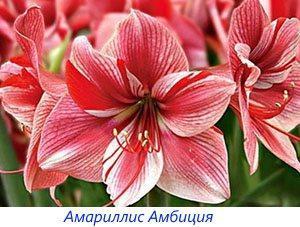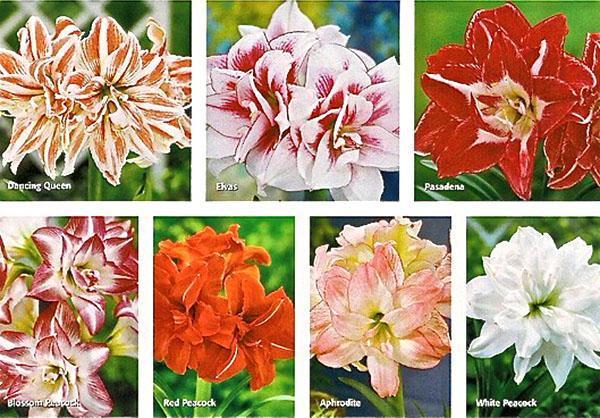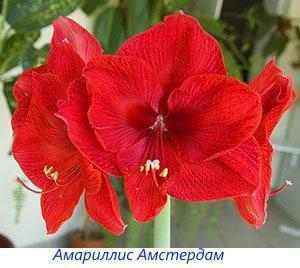How to distinguish between hippeastrum and amaryllis?
 The two plants from the amaryllis family are at first glance indistinguishable. Both plants release an arrow, decorated with several gramophones of amazing beauty. At first, rare flowers were grown only in greenhouses, where conditions similar to natural ones were created for them. However, botanists have found a number of signs that indicate the differences. hippeastrum and amaryllis in the photo and in catalogs of plant varieties.
The two plants from the amaryllis family are at first glance indistinguishable. Both plants release an arrow, decorated with several gramophones of amazing beauty. At first, rare flowers were grown only in greenhouses, where conditions similar to natural ones were created for them. However, botanists have found a number of signs that indicate the differences. hippeastrum and amaryllis in the photo and in catalogs of plant varieties.
History of appearance in Europe and what makes flowers look like

 In 1821, the botanist W. Herbert identified the main differences between Amaryllis from Africa and plants from the American regions. The new genus was named Hippeastrum. At the same time, Amaryllis beautiful is the true and only species, all other varieties and hybrids are called Hippeastrum or Hyppeastrum hybrid. This procedure was established only in 1954 by the International Botanical Congress.
In 1821, the botanist W. Herbert identified the main differences between Amaryllis from Africa and plants from the American regions. The new genus was named Hippeastrum. At the same time, Amaryllis beautiful is the true and only species, all other varieties and hybrids are called Hippeastrum or Hyppeastrum hybrid. This procedure was established only in 1954 by the International Botanical Congress.
 In the middle of the 19th century, it was reported that amaryllis were delivered to St. Petersburg. In 1936, a nursery for growing bulbs was organized in Adler, and breeding work was carried out in Estonia at the Institute of Experimental Biology since 1953.
In the middle of the 19th century, it was reported that amaryllis were delivered to St. Petersburg. In 1936, a nursery for growing bulbs was organized in Adler, and breeding work was carried out in Estonia at the Institute of Experimental Biology since 1953.
Hippeastrum and amaryllis are bulbous plants. They reproduce by seeds, babies and scales from the bulb. After a period of rest, an arrow grows from the bulb, topped with large gramophone. After prolonged flowering, a dormant period begins.
 The shape and colors of varietal and hybrid specimens are diverse. For lovers, both flowers are perfect in beauty, they are the pride of the owner.
The shape and colors of varietal and hybrid specimens are diverse. For lovers, both flowers are perfect in beauty, they are the pride of the owner.
What is the difference between hippeastrum and amaryllis?
 Amaryllis is a beauty, amaryllis belladonna, these are the names of one genus and one species of Amaryllis plants. Hippeastrum as a genus is represented by 90 species. They are classified as varieties and hybrids:
Amaryllis is a beauty, amaryllis belladonna, these are the names of one genus and one species of Amaryllis plants. Hippeastrum as a genus is represented by 90 species. They are classified as varieties and hybrids:
- cultivated natural varieties;
- with long tubular flowers;
- crossed with amaryllis;
- with hyperstrum regina;
- hybrids - Leopold;
- terry;
- orchid-like;
- miniature-flowered;
At the same time, there are hybrids that do not fit the description to any of these subgroups.
 Plants differ in the period of leaf formation and their dropping. Leaves on amaryllis appear after flowering and help replenish the supply of nutrients. After this, the leaves die off and the bulb enters a dormant period. When flowering, amaryllis have no leaves. Amaryllis bloom in late summer and autumn, releasing a fleshy arrow with a bud of medium-sized flowers of which there are up to 12 pieces. At the same time, the flowers emit a delicate aroma. Amaryllis blooms only once a year.
Plants differ in the period of leaf formation and their dropping. Leaves on amaryllis appear after flowering and help replenish the supply of nutrients. After this, the leaves die off and the bulb enters a dormant period. When flowering, amaryllis have no leaves. Amaryllis bloom in late summer and autumn, releasing a fleshy arrow with a bud of medium-sized flowers of which there are up to 12 pieces. At the same time, the flowers emit a delicate aroma. Amaryllis blooms only once a year.
 Hippeastrum blooms in winter and closer to spring. Flowers reach a diameter of 25 cm, are located on a hollow stem, framed by leaves. Each hand can have from 2 to 6 gramophones. Flowering lasts about two months.
Hippeastrum blooms in winter and closer to spring. Flowers reach a diameter of 25 cm, are located on a hollow stem, framed by leaves. Each hand can have from 2 to 6 gramophones. Flowering lasts about two months.
 You can cut off the arrow and put it in a jug of water. If the water is changed daily, flowering will be long. The freed onion can give another arrow. Can bloom with good care 2 times a year.
You can cut off the arrow and put it in a jug of water. If the water is changed daily, flowering will be long. The freed onion can give another arrow. Can bloom with good care 2 times a year.
Sellers can still call hippeastrum amaryllis. Therefore, by purchasing a bulb, you can determine exactly what type of plant is in front of you.Amaryllis has a pear-shaped bulb covered with husks. If you separate the plate, then inside its weave, similar to a cobweb. The shape of the bulb of the hippeastrum is rounded, elongated, the scales are light, without pubescence.
 Amaryllis leaves are narrow, smooth. In hippeastrum, the leaves are elongated, like belts, erect or drooping, but frame the bulb during flowering, if the plant is rooted. It happens that the leaves are still missing after transplanting, and the arrow is already out.
Amaryllis leaves are narrow, smooth. In hippeastrum, the leaves are elongated, like belts, erect or drooping, but frame the bulb during flowering, if the plant is rooted. It happens that the leaves are still missing after transplanting, and the arrow is already out.
Amaryllis care
 As bulbous plants of the same family, they require similar care. It is imperative for plants to provide a dormant period for good flowering. At the same time, rest for amaryllis is created in summer for flowering in autumn, and the hippeastrum should be dried and placed in a dark cool place a month before the next flowering.
As bulbous plants of the same family, they require similar care. It is imperative for plants to provide a dormant period for good flowering. At the same time, rest for amaryllis is created in summer for flowering in autumn, and the hippeastrum should be dried and placed in a dark cool place a month before the next flowering.
 One of the main differences will be the use of hippeastrum as a cut culture. In this case, the arrow does not draw power from the bulb, and it recovers faster.
One of the main differences will be the use of hippeastrum as a cut culture. In this case, the arrow does not draw power from the bulb, and it recovers faster.
Dangerous for hippeastrum and amaryllis is excessive soil moisture with poor drainage. In this case, various rot fungal diseases may appear. Before planting, it is necessary to make mandatory disinfection and treatment of the bulb with the Hom fungicide.
Plants should be inspected regularly for the presence of spider mites and scale insects, the main enemies of these plants.
On this topic:amaryllis - home care!
Well, it seems, with your help, I figured it out - my flower is hippeastrum, not amaryllis. Thank you so much. Come and visit us. 🙂
And mine is amaryllis!))) Thank you.
All confused, At the hippeastrum, a peduncle appears first, not leaves!
Why are they confused? The article says that often the hippeastrum, after transplanting, first releases an arrow, and then leaves. I can prove this with a personal example. I have a rather old hippeastrum bulb, she is already three years old. The year before last, I did not transplant, so the peduncle came out directly from the foliage, and there were a lot of leaves and quite long. But the next year she transplanted the bulb, since there were many children. At the end of autumn I sent them to rest, completely cut off the leaves after wilting. And when the dormant period ended, my bulb first gave an arrow with 4 huge red buds. The leaves appeared almost after the end of flowering. And it all happened with the same bulb. So everything is correct, and, as they say, is individual for each plant.
Please tell me! In late spring I bought, as I was told in the store, AMARILIS. At home I saw that the plant was infected with pests. I decided to land in the ground in the country. There he bloomed. At the end of August I brought it home. it had 9 powerful leaves. The outer two were not very pretty, I cut them off. The flower has released 3 more leaves. Now there are 10 of them! Question: what about the dormant period? "Rest only in our dreams".
Perhaps you still have a young bulb, and they often do not rest. In addition, keep in mind that the dormant period in amaryllis takes place at a low temperature, poor watering and in the dark. If you watered the flower as always, plus it is also quite warm outside, and the house is not cold yet - how will it go to rest? Or maybe those ugly lower leaves were the first sign? It seems to me that there are two options: leave everything as it is, let it grow for itself, but then flowering in the next season may move. Alternatively, gradually begin to reduce watering so that the bulb can rest.
Thank you very much!
Thanks Olga!